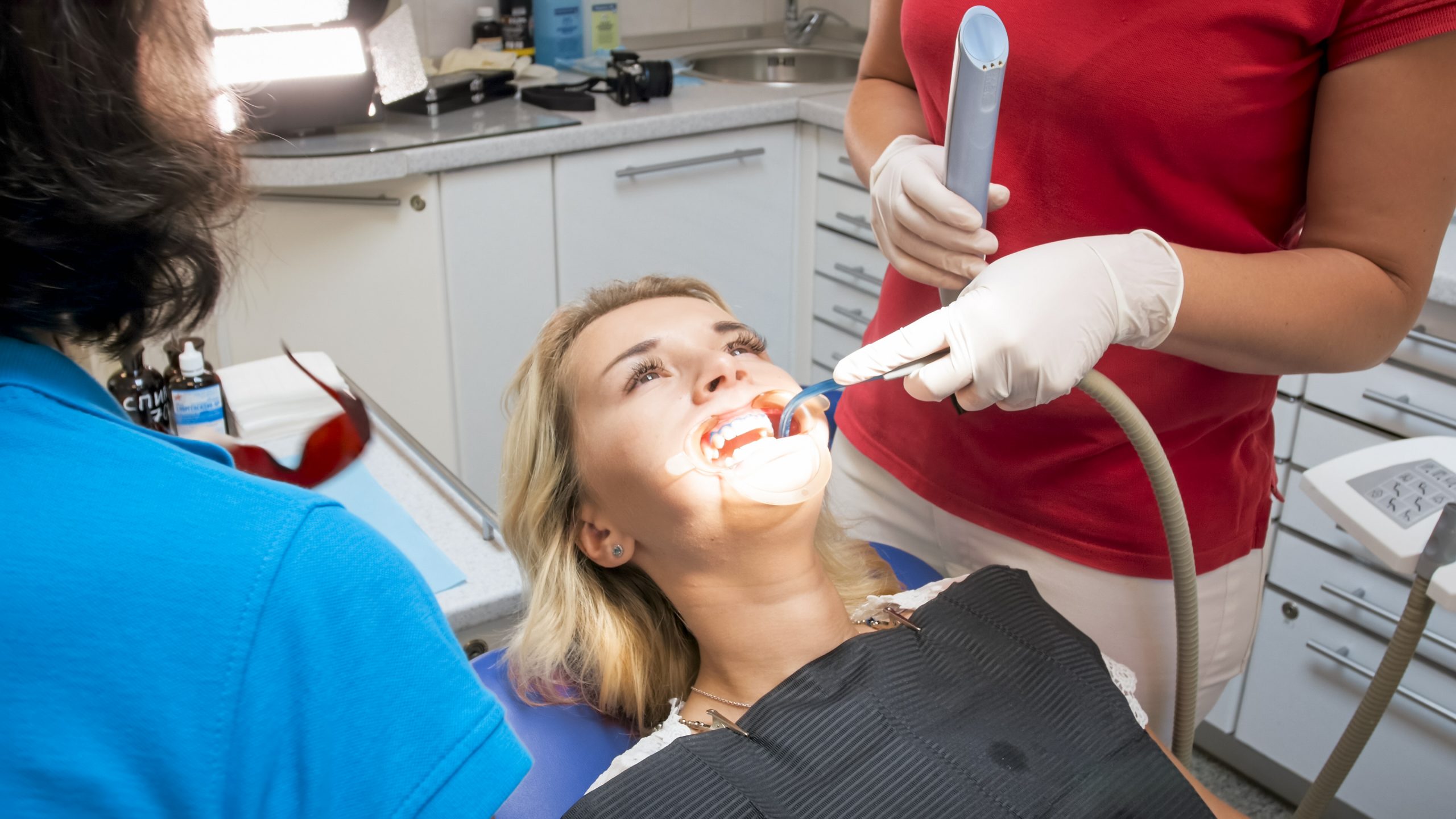
Different treatments are available for gum disease depending on the stage of the disease, your overall health condition and the number of treatments you have responded to earlier. The treatments for gum disease range from non-surgical therapies that help control bacterial growth to surgery that restores supportive tissues.
Book an AppointmentSome non-surgical treatments for gum disease include:
During your routine dental check-up, the dental hygienist or dentist will remove tartar and plaque on your tooth surface from below and above your gum line. Tartar is accumulated plaque on the teeth surface which have hardened overtime.
If you experience signs of gum disease, your dentist may recommend professional dental cleaning more than the recommended two times a year. Although dental cleanings are not a treatment for active gum disease, it is an important preventive measure that helps prevent the development of gum disease.
Scaling and root planing is a non-surgical procedure carried out under a local anaesthetic. This deep-cleaning procedure involves the dentist scraping away tartar and plaque above and below the gum line and smoothing the rough spots in the teeth to remove bacteria and provide a clean surface for your gums to reattach to the teeth.
Your dentist or periodontist will carry out this procedure if they find plaques and calculus (hardened plaques, sometimes called tartar) under your gums.
Common surgical treatments for gum disease include:
Flap surgery involves the dentist lifting back the gums to remove tartar. In some cases, the dentist will smoothen irregular surfaces of damaged bones to limit areas where bacteria can hide, then place the gum tissues to fit around the tooth.
This procedure reduces the space between the tooth and gum, which reduces the spaces where harmful bacteria can breed and reduces the risk of severe health issues resulting from periodontal disease.
This involves using synthetic bone, donated bone, or your bone fragments to replace the bone destroyed by gum disease. The grafted bone helps regrowth of your bone, which makes the teeth more stable.
Your dentist may use a new technology known as tissue engineering, which stimulates your body to regenerate tissues and bone at a faster rate.
During this procedure, the dentist fills in spaces from receded gums and reinforces thin gums. In most cases, the dentist takes grafted tissues from the roof of the mouth and stitches them, then adds tissues to the affected area.
This procedure is necessary when the supporting teeth are damaged. It stimulates the gum tissue and bone growth. When carried out alongside a flap surgery, the dentist will insert a piece of mesh-like fabric between your gum tissue and bone to prevent the gum tissue from growing into the area where the bone should be. This allows the bone and connective tissue to regrow and provide better support for the teeth.
Bone surgery involves smoothening shallow craters in the bone due to moderate and advanced bone loss. After flap surgery, the dentist will reshape the bone around the teeth to reduce the craters, making it more difficult for bacteria to breed and grow.
Sometimes, non-surgical procedures such as scaling and root planingare sufficient to treat gum disease. Surgery is usually necessary when the tissue around the teeth is unhealthy and non-surgical treatments cannot repair the damage.
Your dentist may prescribe antibiotics alongside surgery and other therapies or only one of these to reduce the bacteria that cause gum disease, temporarily eliminate them, or reduce the destruction of the tooth attached to the bone.
Chlorhexidine is an antibacterial medication that controls gingivitis and plaque in the mouth or periodontal pockets. Your dentist may prescribe this medication as a gelatin-filled chip placed in the pockets after root planing. This will release the medication over seven days.
Other antibiotics used to treat gum disease include tetracycline, minocycline, and doxycycline. Your dentist may also recommend other treatments such as toothpaste containing fluoride and antibiotics known as triclosan to reduce gingivitis and plaque.
Most procedures for gum disease treatment are carried out in the dentist’s office. The duration of the procedure, healing period, and degree of discomfort vary between patients, depending on the extent of the procedure and overall health.
If you experience symptoms of gum disease, visit Smile Clinic London to have an experienced dentist examine your condition and offer suitable treatment. You can contact 020 7139 8611to schedule an appointment for your gum disease treatment.